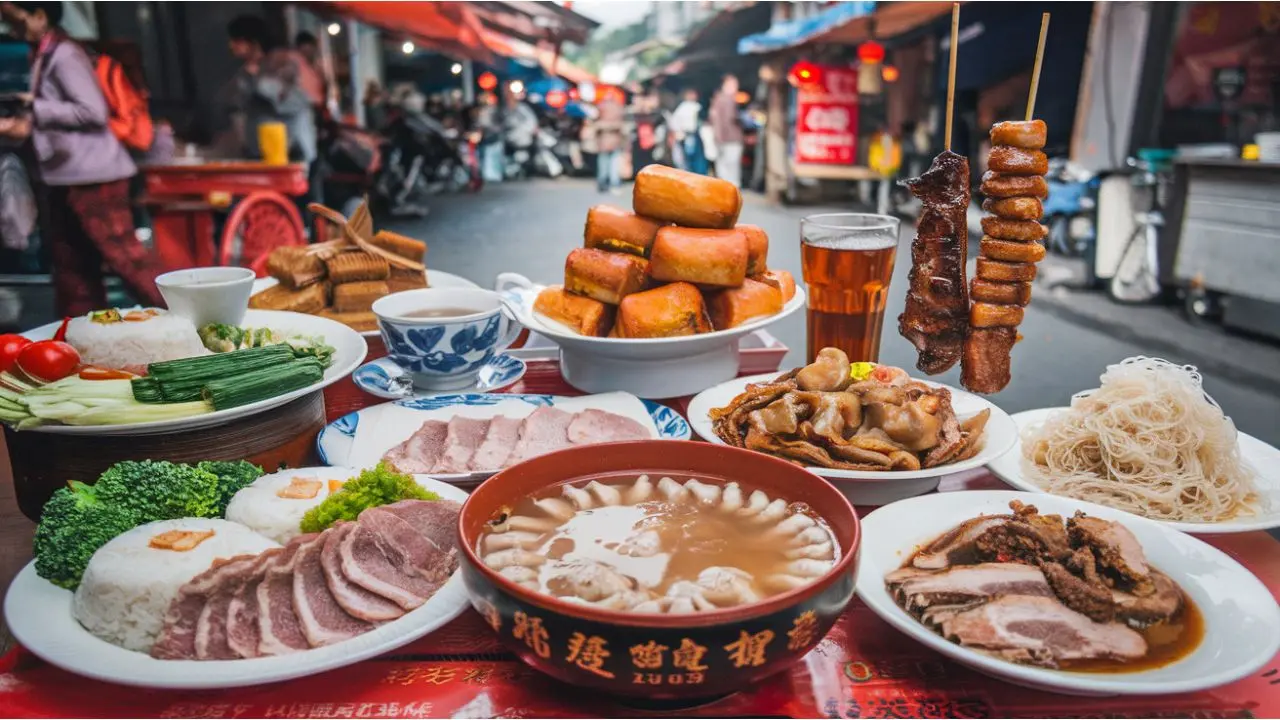Ceıvır: A Flavorful Journey into Tradition
Introduction to Ceıvır
Ceıvır is more than just a meal; it is a celebration of cultural heritage on a plate. Rooted in long-standing cooking traditions, this dish captures the balance of fresh ingredients, careful preparation, and the warmth of community dining. At its heart, ceıvır relies on thinly sliced meat, often lamb, but variations exist depending on the region and personal preference. It is a food that brings people together, often prepared during special occasions, family gatherings, or community festivals.
The Origins and Meaning Behind the Dish
While the specific historical path of ceıvır is wrapped in culinary folklore, the name itself carries a sense of familiarity and pride among those who grew up eating it. Traditionally, ceıvır was prepared to mark seasonal transitions—particularly the arrival of spring—when fresh herbs and vegetables were abundant. Farmers and herders would gather the best cuts of meat, season them with locally sourced spices, and slow-cook them over a gentle fire. This ritual not only created a delicious meal but also reinforced bonds between neighbors and families.
Core Ingredients That Define Ceıvır
The hallmark of ceıvır lies in the simplicity and quality of its ingredients. At the base is thinly sliced meat—lamb being the classic choice, though beef or poultry can be substituted depending on availability. Fresh herbs, such as parsley, mint, or thyme, provide a green freshness that balances the richness of the meat. Seasonal vegetables like tomatoes, peppers, and onions are added for both flavor and color. The seasoning is deliberate but never overpowering, typically including a pinch of salt, a touch of pepper, and perhaps a hint of regional spices passed down through generations.
The Traditional Cooking Method
Authentic ceıvır preparation is a slow and attentive process. The meat slices are marinated to absorb flavors deeply—often for several hours—before being gently cooked. Traditionally, a flat iron surface or open fire is used, allowing the meat to develop a tender texture while lightly caramelizing on the edges. This method enhances the natural flavors without masking them with heavy sauces. The cooking is done in stages, with vegetables added at just the right moment to ensure they remain vibrant yet tender.
Ceıvır as a Community Experience
Ceıvır is rarely made for one person. It is a dish designed to be shared, often prepared in generous portions for groups. During village celebrations or family reunions, a large pan of ceıvır sits at the center of the table, inviting everyone to serve themselves. The act of gathering around the dish, passing bread, and exchanging stories is as important as the flavors themselves. In many households, preparing ceıvır becomes a family affair, with each member contributing—whether slicing vegetables, tending the fire, or seasoning the meat.
Variations Across Regions
Though the core concept remains consistent, ceıvır takes on subtle differences depending on the region. In some areas, it is served with rice pilaf; in others, it comes wrapped in flatbread. Certain communities add yogurt sauce or tangy pickled vegetables for contrast. Urban adaptations may use electric grills and modern marinades, while rural recipes stick to open flames and wild herbs. These variations highlight the adaptability of ceıvır while preserving its identity.
Pairing Ceıvır with Side Dishes
A well-prepared ceıvır shines even brighter when complemented by thoughtful side dishes. Soft, freshly baked bread is perhaps the most common accompaniment, perfect for soaking up the savory juices. Crisp salads with cucumbers, tomatoes, and lemon dressing add brightness. Lentil soup is another traditional pairing, often served before the main dish to warm the appetite. For drinks, light herbal teas or cool ayran (a yogurt-based beverage) balance the richness of the meat.
Nutritional Perspective
Beyond its cultural and sensory appeal, ceıvır offers a respectable nutritional profile. Lean cuts of lamb provide protein, iron, and essential vitamins. The inclusion of vegetables contributes fiber and antioxidants, while the use of fresh herbs adds trace minerals and natural anti-inflammatory compounds. By choosing high-quality ingredients and mindful cooking techniques, ceıvır can be both satisfying and wholesome.
Modern Interpretations of Ceıvır
In contemporary kitchens, ceıvır has inspired creative twists. Some chefs experiment with plant-based alternatives, substituting the meat with marinated mushrooms or grilled eggplant for a vegetarian version. Others infuse the dish with global flavors—such as adding a touch of soy sauce or chili paste—without losing the essence of the original recipe. These modern interpretations show that ceıvır’s appeal transcends cultural boundaries, inviting new audiences to experience its charm.
Tips for Making Perfect Ceıvır at Home
- Choose Fresh Ingredients – The quality of the meat and vegetables will define the final taste.
- Marinate Generously – Allow enough time for the meat to absorb seasonings fully.
- Control the Heat – Whether using a pan or grill, moderate heat ensures tenderness without burning.
- Add Vegetables Late – This keeps them colorful and crisp.
- Serve Immediately – Ceıvır is best enjoyed fresh off the fire or pan.
Why Ceıvır Endures Through Generations
Part of ceıvır’s enduring popularity is its deep connection to identity and togetherness. It is a dish that embodies generosity, skill, and respect for ingredients. From grandparents passing down their special spice blends to children learning how to turn the meat at just the right moment, ceıvır is more than food—it is a tradition that strengthens the fabric of family and community life.
Conclusion
Ceıvır remains a living testament to the power of simple, honest cooking. Its enduring charm lies in the way it bridges the past and present—keeping alive the flavors of old traditions while embracing modern creativity. Whether enjoyed in a bustling city kitchen or an open field during a festival, ceıvır is a reminder that the best meals are those made with care, shared with others, and remembered long after the last bite.






